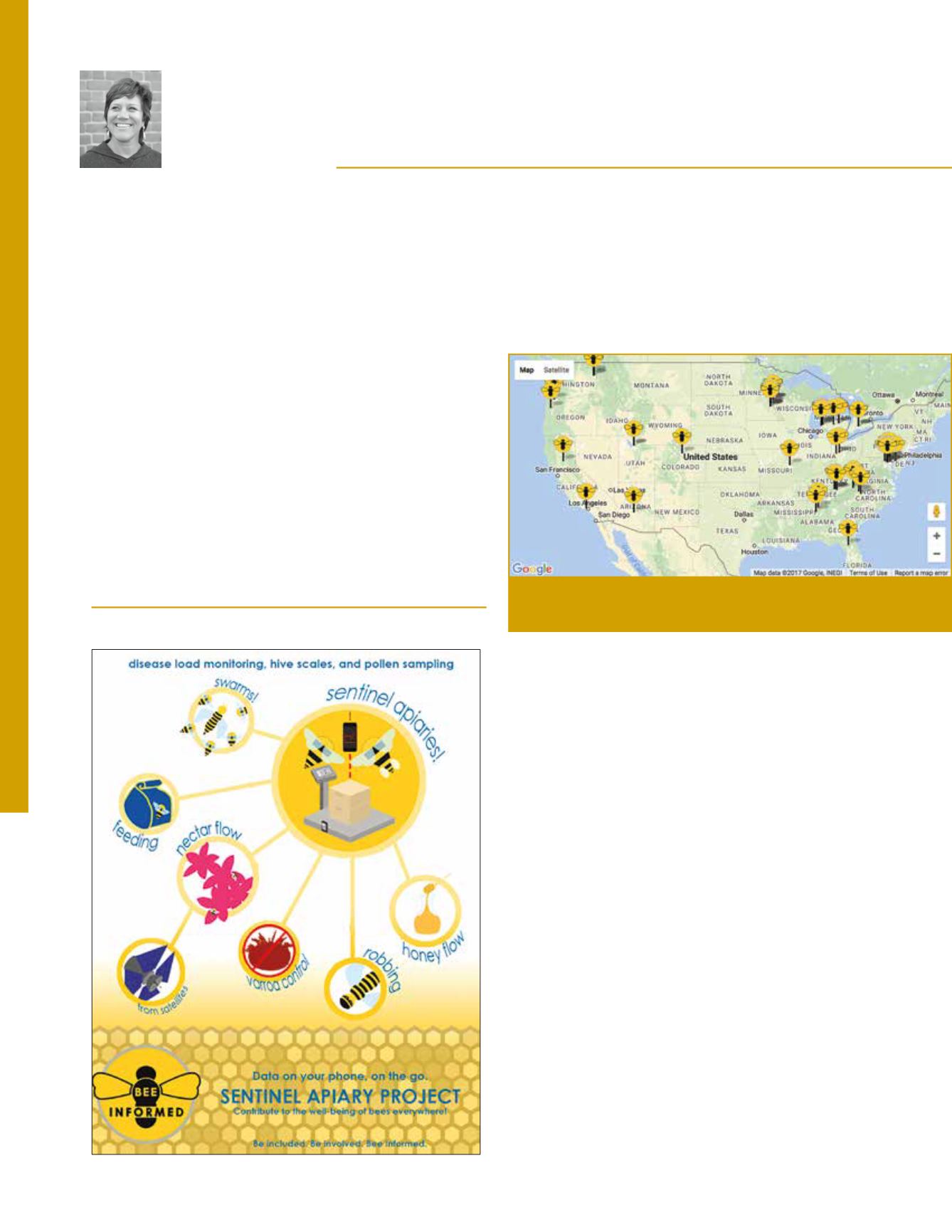
THE BEE BOX
The Bee Box
KAREN RENNICH
34
Almond Facts
MARCH | APRIL 2017
Sentinel Apiaries
It is no doubt that climate is changing, and in some areas, very quickly. Flooding, drought, and extreme
weather events are a fewmanifestations of this change. There is a term used by scientists that identifies a
species of plant or animal endemic to a region that helps monitor what is happening in that environment.
That phrase is “sentinel species” or “indicator species”.
By monitoring what is happening with these sentinel
species, we can measure what is happening to the
environmental conditions in that area. For example,
some lichens or plants can monitor air pollution, acidity
or heavy metals in soil. Species associated with healthy
oceans or estuaries can be used to monitor water quality
and disease outbreaks. Honey bees are also considered
an indicator species. We can use Sentinel apiaries, a
collection of honey bee colonies, to gather localized disease
and other climate information such as the phenology,
including pollen flow and nectar flow, of that area.
We have been testing the use of Sentinel Apiaries for
several years now and the Bee Informed Partnership has
an active Sentinel Apiary Program across the U.S. that
is growing each week. Our Sentinel Apiaries include
eight colonies and regular, monthly sampling and
colony assessments during the beekeeping calendar. Of
the eight colonies, at least one is mounted on a digital
hive scale continually measuring the weight gains and
losses, providing colony growth, swarm control, honey
production and other feedback to the beekeeper and our
researchers. Because much of these data are shared online,
it enables other beekeepers in the area to also monitor
what is happening in the environment.
The use of regular disease load monitoring (Varroa mites
and Nosema spores) offers beekeepers the ability to make
informed management decisions about treatment timing
and efficacy. The hive scale data can indicate when food
stores are low necessitating feeding, or when to add supers
if weight gains are rapid. A noticeable drop in weight may
also alert a beekeeper to a departing swarm.
Colony health assessment data are sent to the participating
beekeepers each month. These reports allow beekeepers
Bee Informed Partnership Sentinel Apiaries combines scale data with monthly
disease load monitoring information.
Bee Informed Partnership Sentinel Apiary Map. All of the BIP logos are
actual Sentinel apiaries with live hive scale data. This map can be found
at beeinformed.org/programs/sentinel-hive-scale-program/


